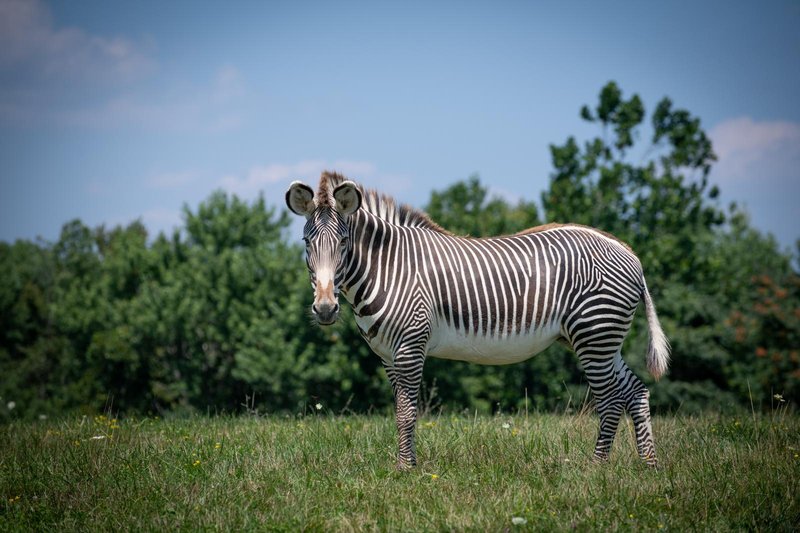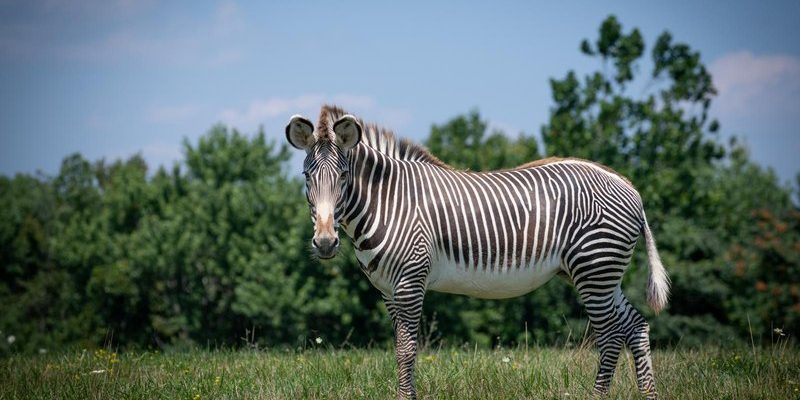
Picture this: each zebra has its own unique stripe pattern, much like our fingerprints. The Grevy’s zebra, with its long legs and large ears, has developed some distinct behaviors and adaptations for its environment. It’s like the tall, quirky cousin of the traditional zebra family. By exploring these myths, we’ll not only learn more about the Grevy’s zebra but also appreciate the diversity within species. Let’s dive in!
The Size Difference: Are All Zebras the Same Size?
One of the biggest myths about the Grevy’s zebra is that it’s just like any other zebra—smaller and cuter. Here’s the thing: the Grevy’s zebra is actually the largest of the zebra species! Adult males can weigh up to 990 pounds and stand about 5 feet tall at the shoulder. They are lean and mean, with a more horse-like appearance compared to their more compact relatives, like the Plains zebra.
These zebras have longer legs and a more pronounced mane, which can make them look even taller. Imagine meeting a horse-like zebra at a petting zoo! While their cousins prance around with heavier builds, the Grevy’s zebra exudes a grace that’s hard to miss. This size difference plays a crucial role in how they survive in the wild, especially when competing for resources.
Height vs. Weight in Animal Adaptations
It’s also worth noting that size isn’t just a matter of looks. Being larger can help Grevy’s zebras escape predators more easily. Their height gives them a better vantage point to spot danger, while their long legs help them flee quickly. In contrast, smaller zebras might be better at blending into their surroundings, but they can’t always outrun larger threats. Understanding these adaptations helps us appreciate how different species evolve to survive in their unique environments.
The Misunderstanding of Habitat: Do Grevy’s Zebras Live Alone?
Another misconception about the Grevy’s zebra is that they lead solitary lives—like some majestic, lonesome cowboy in a Western film. In reality, Grevy’s zebras are social animals! They tend to form loose herds, often composed of mares and their foals, with adult males sometimes hanging around to protect the group.
You might picture them roaming the African savannas in packs, munching on grass while chatting away (in zebra language, of course). These social structures are crucial, especially for raising young zebras. The mares share maternal duties, ensuring that the foals are kept safe and learned the ropes of their environment. Without these social bonds, they wouldn’t thrive nearly as well.
Male Dominance: The Alpha Male Myth
You might also wonder about the male Grevy’s zebras. Are they the big boss of the herd? While dominant males do exist, they don’t always control a strict hierarchy like in some other animal societies. Instead, males may jostle for attention and mating rights without a rigid pecking order. It’s more of a playful competition than a serious power struggle. So, while a strong male might often be the one to mate with females, it doesn’t mean he’s the unquestioned leader of the group.
Diet Dilemmas: Are They Just Grass Grazers?
You might think, “Zebras eat grass—end of story,” but the Grevy’s zebra has a surprisingly varied diet. While they do enjoy grazing on grass, they also munch on leaves, shrubs, and even fruits when the opportunity arises. Their long necks come in handy for reaching higher foliage that other grazers might not access.
This adaptability in diet is essential for survival, particularly during dry seasons when grass is sparse. They can get nutrients from a broader range of plants, making them resilient compared to other zebras, which are often more grass-dependent. So, the next time you see a Grevy’s zebra, imagine it nibbling on more than just grass!
Impact of Climate on Diet
Climate changes can significantly influence what Grevy’s zebras eat. With droughts becoming more common, these zebras have had to adapt rapidly. Their ability to switch to different food sources not only helps them survive but also shapes their role in the ecosystem. By grazing on bushes and shrubs, they help keep these plants in check, which can encourage more diverse plant growth in their habitat.
Color Confusion: Are All Zebras Black and White?
You might be surprised to learn that the Grevy’s zebra isn’t just a classic black-and-white striped animal. In fact, their stripes are narrower and more closely spaced than those of other zebra species. Some folks even joke they look like they’re dressed for a fancy black-and-white party!
This unique stripe pattern serves more than just looks. The stripes may help with **camouflage**, fooling predators as they move through grasslands and bushes. Plus, the varying patterns are thought to help with social interactions among zebras, allowing them to recognize one another. It’s like a special uniform that has practical purposes!
The Science Behind Stripes
Researchers have delved into the psychology of zebra stripes. Some studies suggest that these patterns might also help deter biting flies, which can transmit disease. The contrasting colors disrupt the vision of the insects, keeping the zebras safer. Who knew those stripes were doing double duty?
Conservation Concerns: Are Grevy’s Zebras Thriving?
One of the most concerning myths about Grevy’s zebras is the idea that their populations are stable and thriving. Unfortunately, that’s far from the truth. Grevy’s zebras are classified as endangered, with populations dwindling due to habitat loss, competition with livestock, and poaching.
Conservation efforts are ongoing, and while some gains have been made, the struggle continues. It’s crucial to educate ourselves about these animals and support efforts that aim to protect them. Understanding the threats they face can inspire us to take action, whether through supporting wildlife organizations or spreading awareness among friends and family.
How You Can Help
Even if you’re not in a position to support organizations directly, there are simple ways to make a difference. You can share information about Grevy’s zebras on social media, participate in local conservation programs, or donate to wildlife preservation efforts. Every little bit helps, and spreading the word can lead to greater support for these magnificent creatures.
Wrapping It Up: The Truth About Grevy’s Zebras
Now that we’ve unraveled some common myths about the Grevy’s zebra, it’s clear that these animals are far more complex and fascinating than many people realize. From their size and social structures to their diets and conservation needs, understanding the nuances of the Grevy’s zebra brings us a step closer to fully appreciating them.
So, the next time you think about zebras, take a moment to remember our tall, quirky friend—the Grevy’s zebra. They might not be the stereotypical zebra we often envision, but they certainly add a unique thread to the rich tapestry of wildlife. By dispelling these myths, we can help ensure that subsequent generations have the chance to learn about, understand, and admire this incredible species.

